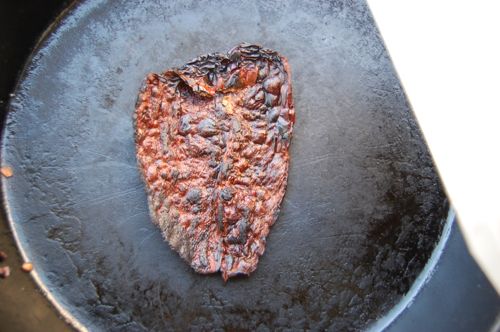Do I make my own scratch masa?
Heck no. I may render my own lard, but when it comes to making masa, I leave that to others. Back home in Chicago I was spoiled. I lived among hundreds of thousands of Mexicans, which meant fresh-made masa was readily available in grocery stores (the ones that catered to the Mexican population, anyway). Louisville doesn’t have nearly enough Mexicans to warrant a tortilla bakery (not yet, anyway), and that’s where fresh masa comes from. Until one of those is put up (hm…possible new business venture?) I make do with the dehydrated stuff.
READ ON
